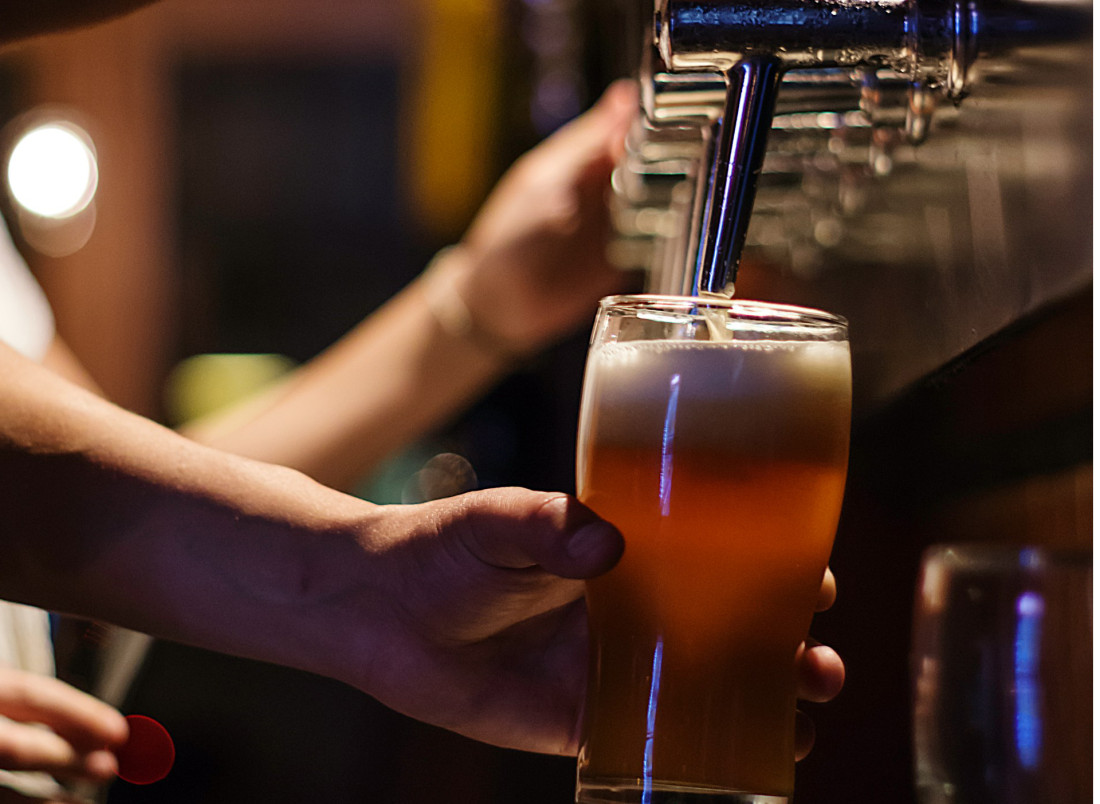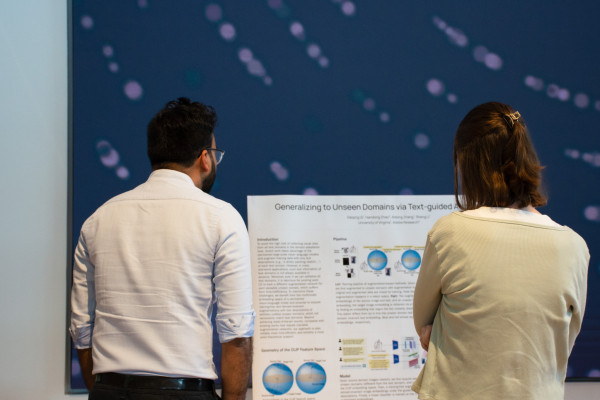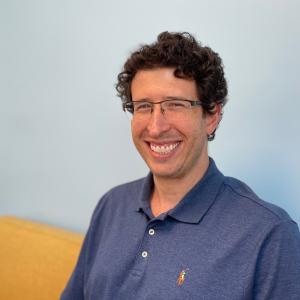
Data Science Capstone Project Examines COVID's Impact on Alcohol-Related Health Incidents at UVA

It is no secret that alcohol consumption, including underage drinking, has long been closely associated with the collegiate experience.
When taken to excess, alcohol use can lead to serious consequences for students, from academic difficulties to health emergencies.
Developing a better understanding of the issue could prove critical to crafting effective interventions, according to health officials.
That’s why the University of Virginia’s Department of Student Health & Wellness teamed up with the School of Data Science, working with two of its master’s students on a capstone project that aimed to shed light on drinking-related student health incidents at UVA in the years shortly before, during, and after the onset of the COVID-19 pandemic.
Capstone projects are a critical component of the data science master’s degree curriculum. In them, students work with a faculty mentor and an external sponsor to tackle a real-world data science challenge.
For this project, master’s students Nicholas Cagliuso and Samy Kebaish worked with Dr. Christopher Holstege, senior associate vice president for student health and wellness at UVA; Dr. Rita Farah, lead epidemiologist with UVA Student Health & Wellness; and Rebecca Ferrara, a public health data specialist with Student Health & Wellness. Adam Tashman, an associate professor of data science and director of the capstone program, served as the students’ faculty mentor.
Their objective was to analyze whether the pandemic had a noticeable impact on the rate of drinking-related incidents and further examine whether certain student attributes or activities are linked with these cases. The project was a continuation of work UVA Student Health & Wellness had done in the previous decade.
By focusing on data to better understand this critical area of student health, Holstege and Farah are hopeful they can learn vital information that can be used to help address this challenge.
“It’s all about data. If we’re data driven, we can actually be more efficient,” said Holstege.
Added Farah, on the importance of the study: “We are able to understand better before COVID, after COVID, during COVID, or any event that is occurring that is impacting the student’s life, how this is impacting their well-being, their patterns, their habits, in order to have a targeted intervention.”
Cagliuso and Kebaish divided up the work, with the two looking at seven different data sets that spanned from 2018 — two years before COVID swept the globe — through the end of 2023, when pandemic-related restrictions had largely been lifted.
Cagliuso focused on a time-series analysis to see if there were any noticeable patterns in terms of alcohol-related student health incidents before, during, and after the pandemic. He found a clear takeaway in terms of high-acuity alcohol incidents.
“There seems to have been a spike since the pandemic ended and things returned to normal on Grounds,” he said. “The rate of alcohol incidents as a share of all medical incidents, to the point that they require emergency room visits, that seems to have increased.”
For less-severe alcohol-related cases, though, Cagliuso said the results were less clear whether COVID had any impact.
Not surprisingly, he added, the rate of alcohol-linked health incidents declined during COVID-era shutdowns.
“You obviously think of something like alcohol as largely a social behavior. So, for there to be fewer people with each other in lockdown, it makes sense that it could become much less of a share of what’s happening medically,” Cagliuso said.
During a summer virtual presentation by student in the online master’s program, Cagliuso and Kebaish laid out their findings, methodological approach, and data, including how they were able to view not just the date a patient was admitted to the emergency department but also the hour, which helped in classifying an event as connected to alcohol.
Kebaish also explained how he was able to combine data sets, using a serial number that was unique to each student, to help sharpen the analysis.
Among the results Kebaish highlighted were that patients who engaged in alcohol abuse tended to be younger in each of the pre-COVID, COVID, and post-COVID eras.
Another finding: Patients admitted for alcohol-related incidents are more than 40 times more likely than those who do not abuse alcohol to use cocaine, he said.
Kebaish noted that their analysis showed that many patients who went to the emergency department because of an alcohol incident would in a short time return to the emergency department — in most cases, he said, the same month or the month after.

Throughout it all, Cagliuso and Kebaish checked in with Tashman, who, in addition to consulting on the data analysis, counseled the students on how to effectively work with their sponsors at UVA Student Health & Wellness. They, in turn, would offer suggestions about other angles the students could explore and helped guide them along to ensure the project was meeting its objectives.
“Their collaboration and communication and insight were always great,” Cagliuso said.
Farah and Holstege are both hopeful the work the group produced will reach a wider audience through publications.
“We are trying to dissect their findings into thinking, how many abstracts and how many papers?” Farah said, adding that there was a “Iot of potential” for follow-up works.
“I see a bigger manuscript just building on what we have published in the past and where we’re at right now,” added Holstege, noting that he also anticipated that there could be numerous other abstracts focused on specific areas of the group’s work.
At the presentation event, Tashman commended the collaboration and the possibilities it might lead to in the future.
“This was really exciting and an interesting data set and an opportunity for our students to help other students at UVA and to start up an exciting partnership,” Tashman said.




